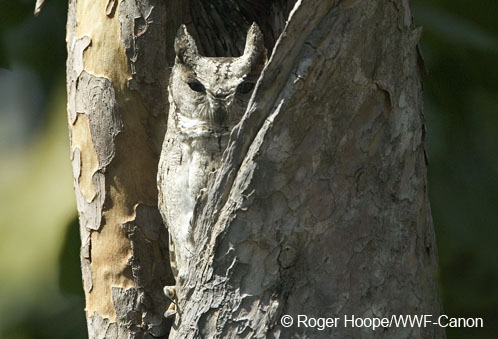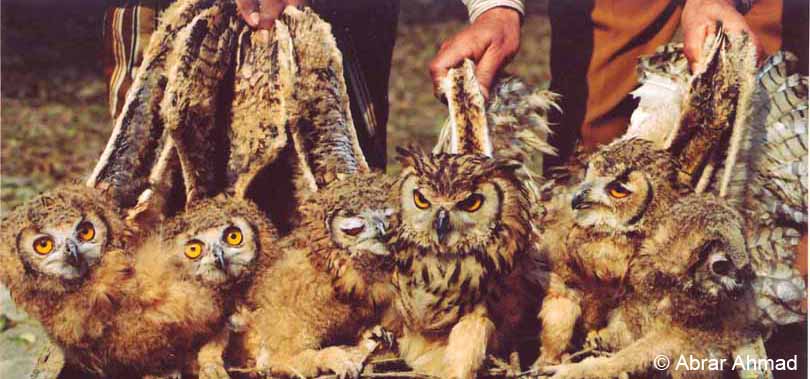OWLS
The extensive ways in which owls feature in our country’s mythology, folklore and superstitions surely wouldn’t have escaped anyone! The Indian subcontinent is home to 35 species of owls, and 32 of them are recorded from India . These nocturnal birds of prey are the prime consumers of rodents which makes them extremely beneficial to people.
Owls are protected in our country which means hunting, trade or any other form of utilization is prohibited. Yet this protected status is little known by the general public and therefore owltrade continues. Furthermore, there is little chance of the birds being detected during transportation since captive owls do not generally tend to call or flutter. *Download the owl factsheet*


WHAT THREATENS THEIR FUTURE?
Illegal trade in owls driven by various superstitions associated with them in India have become the major cause for concern. Owls remain a key target for several tribes connected with bird trade.
How are owls exploited?
- Owls and their body parts are primarily used for black magic in both tribal areas and cities where demand is created by practicing Shaman or black magic practitioners, frequently referred to as tantriks, who prescribe the use of parts from live owls such as skull, feathers, ear tuffs, claws, heart, liver, kidney, blood, eyes, fat, beak, tears, eggshells, meat and bones for ceremonial pujas and rituals.
- Owls are used for street performances, particularly in small towns and villages. The three most commonly used species are Rock Eagle Owl, Dusky Eagle Owl and Brown Fish Owl because their large size and ear-like tufts of feathers helps attract crowds.
- Owls are also sometimes trapped, killed and stuffed to be sold as zoological specimens for schools, colleges and museums. Stuffed specimens of Barn Owls and Spotted Owlets are commonly retailed.
- The feathers, bones and claws of owls are used for folk medicines. Their meat is considered a potent aphrodisiac.
- Many species of owls are also used as decoys to capture other birds.
- Live owls are also used to fight against Peregrine Falcons as a form of entertainment in a few places in India.
- There are some indications that owls are smuggled out of India for the pet trade.
The main centres for the illicit trade in owls are located in:
- Uttar Pradesh
- Madhya Pradesh
- West Bengal
- Andhra Pradesh
- Delhi
- Gujarat
- Rajasthan
- Bihar
The extent of this illegal trade
While the exact number of owls traded each year is unknown, their widespread exploitation poses a grave conservation threat! The top five species of owls preferred by traders are Rock Eagle Owl, Brown FishOwl, Dusky Eagle Owl, Collared Scops Owl and Mottled Wood Owl.
According to TRAFFIC’s nationwide study of the bird trade undertaken between1992 and 2008, more than 1000 owls belonging to 13 species were recorded in trade. This is despite most of the trade being clandestine, the owls neither being displayed nor advertised for sale.

Copyright 2015 WWF-India | All Rights Reserved.